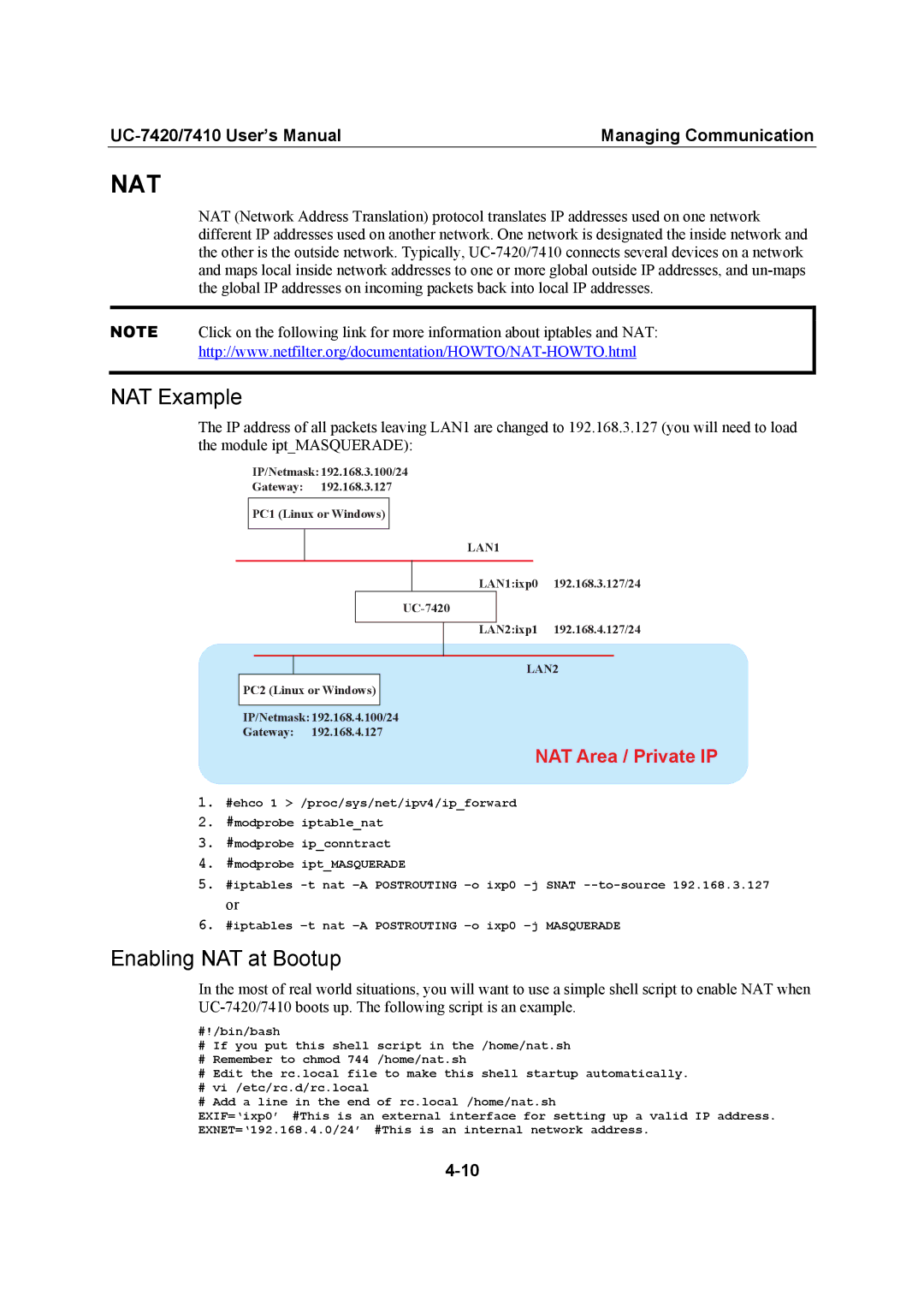
Managing Communication |
NAT
NAT (Network Address Translation) protocol translates IP addresses used on one network different IP addresses used on another network. One network is designated the inside network and the other is the outside network. Typically,
NOTE Click on the following link for more information about iptables and NAT:
NAT Example
The IP address of all packets leaving LAN1 are changed to 192.168.3.127 (you will need to load the module ipt_MASQUERADE):
IP/Netmask: 192.168.3.100/24
Gateway: 192.168.3.127
PC1 (Linux or Windows)
LAN1
LAN1:ixp0 192.168.3.127/24
LAN2:ixp1 192.168.4.127/24
LAN2
PC2 (Linux or Windows)
IP/Netmask: 192.168.4.100/24
Gateway: 192.168.4.127
NAT Area / Private IP
1.#ehco 1 > /proc/sys/net/ipv4/ip_forward
2.#modprobe iptable_nat
3.#modprobe ip_conntract
4.#modprobe ipt_MASQUERADE
5.#iptables
or
6.#iptables
Enabling NAT at Bootup
In the most of real world situations, you will want to use a simple shell script to enable NAT when
#!/bin/bash
#If you put this shell script in the /home/nat.sh
#Remember to chmod 744 /home/nat.sh
#Edit the rc.local file to make this shell startup automatically.
#vi /etc/rc.d/rc.local
#Add a line in the end of rc.local /home/nat.sh
EXIF=‘ixp0’ #This is an external interface for setting up a valid IP address. EXNET=‘192.168.4.0/24’ #This is an internal network address.
